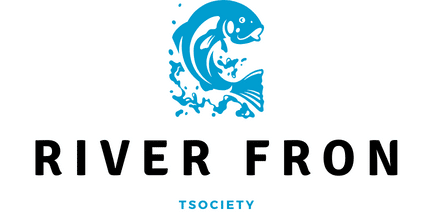How Can Youth Basketball Players Utilize Video Analysis to Improve Defensive Tactics?

In the dynamic world of basketball, video analysis plays a crucial role in helping players unlock their full potential. The power that lies in this tool cannot be overstated, especially for youth players seeking to level up their game. Defensive tactics, in particular, can significantly benefit from the insight offered by video analysis. A careful study of gameplay footage can reveal patterns, tendencies, and weaknesses that may otherwise go unnoticed during the heat of the game.
The Relevance of Video Analysis in Basketball
Video analysis has revolutionized how basketball players, both youth and professional, train and improve their performance. You can rely on video analysis to learn new tactics, correct mistakes, and make informed decisions on the court. Here, we will delve into why it’s an invaluable tool for any basketball player aiming to enhance their defensive strategies.
Also to discover : What Are the Key Mental Strategies for Overcoming Plateaus in Competitive Weightlifting?
Video analysis is a study tool that allows players to review their performance in past games. It provides a visual breakdown of how a player moves around the court, how they respond to different situations, and how effectively they use their skills. This method is not just limited to individual players. Teams also heavily rely on this sport technology to study their opponents and plan their strategies accordingly.
Moreover, data from video analysis can be used to identify areas where a player or a team is falling short. From a defensive standpoint, this includes reviewing how a player or a team reacts when the ball is in the opponent’s possession. Analysis of such data can inform targeted training sessions aimed at improving specific weaknesses.
In the same genre : How Can a Vegetarian Diet Be Best Adapted for High-Intensity Boxers?
How Video Analysis Helps Improve Defensive Tactics
Let’s dive deeper into how video analysis can be utilized to improve defensive tactics specifically. A solid defensive game strategy is critical in basketball. It’s not always about who can score the most points; it’s also about who can prevent the other team from scoring.
The key advantage of video analysis is that it allows players to review their performance from a third-party perspective. It’s often challenging to fully understand what’s happening on the court when you’re in the middle of the game. By taking a step back, players can gain a new perspective on their positioning, timing, and decision-making.
For instance, a player might realize that they often fail to block shots effectively because they are reacting too late. With this knowledge, the player can work on their reaction speed during training. Video analysis can also reveal if a player tends to favor one side of the court, leaving the other side vulnerable to attacks. This could be addressed by practicing defensive drills that force the player to utilize the entire court.
Utilizing Studies for Better Video Analysis
Numerous studies published on platforms like PubMed and CrossRef have underlined the importance of video analysis in sports training. Such studies provide valuable insights into how to get the most out of video analysis.
For example, some studies suggest that players should review game footage together as a team, rather than individually. This promotes open communication and allows players to understand their roles within the team better. Other studies stress the importance of reviewing footage of opponents as well. By studying an opposing team’s tactics, a team can better prepare their defensive strategies.
Incorporating these findings into your video analysis routine can drastically improve the effectiveness of your defensive tactics training.
The Role of Google in Enhancing Video Analysis
Google, as a global technology giant, has a significant role to play in enhancing video analysis. With various tools like Google Cloud Video Intelligence API, teams and players can not only analyze videos but also easily search and discover video content. This technology can identify key entities within video footage, making it quicker and easier to review game highlights and important plays.
Google’s technology can also detect specific objects within videos, such as the ball or a player. This can be particularly useful in analyzing a player’s ball-handling skills or tracking the ball’s movement during a game. This level of detail can provide a deeper understanding of the game dynamics and player performance.
Conclusion
Video analysis is no longer a tool reserved for elite athletes. With the accessibility of technology, even youth basketball players can benefit from this invaluable tool. By regularly reviewing game footage and applying the insights gained, players can significantly enhance their defensive tactics, making them stronger, more versatile, and more strategic players on the court.
Incorporating Google Scholar and CrossRef into Video Analysis
With the ever-expanding digital resources available, video analysis can be enhanced significantly. Google Scholar and CrossRef are among these resources that can have a significant impact on the training programs for youth basketball players.
Google Scholar, an extensive database of scholarly articles and studies, can be used to find research related to video analysis in basketball. These studies can provide evidence-based strategies for improving defensive tactics. For instance, players can gain insights into reaction time, positioning, decision-making skills, and more by reviewing the findings from different studies.
CrossRef, on the other hand, is an official Digital Object Identifier (DOI) Registration Agency of the International DOI Foundation. It’s a reliable source to find related works from an array of publishers and societies. By using CrossRef, players and coaches can find valuable articles and studies that are cross-referenced with their search terms.
For instance, if a player wants to improve their response accuracy, they can use CrossRef to find relevant studies. Similarly, they can look up terms like "defensive tactics," "youth basketball," "team sports," or "video analysis" to find research that can help them improve their game.
Moreover, using Google Scholar and CrossRef can also help teams identify potential weaknesses of the offensive players from the opponent team. By researching and understanding these weaknesses, teams can strategically plan their defensive tactics.
Crafting an Effective Training Program with Video Analysis
Once the video analysis has been performed and insights have been gathered from Google Scholar and CrossRef, it’s time to put these to use. These insights must be incorporated into the training program to help the players improve their defensive tactics. A well-thought-out training program that uses video analysis can lead to significant improvements in both individual and team performance.
For instance, if the video analysis shows that a player often reacts late to block shots, the training program should include drills that improve the player’s reaction speed and timing. Similarly, if the analysis reveals that the player tends to favor one side of the court, drills that force the player to use the entire court should be included.
Moreover, once the weaknesses of the opposing team’s offensive players have been identified using Google Scholar and CrossRef, specific defensive strategies can be designed. These strategies should aim to exploit these weaknesses and give the team an advantage in the game.
Videos of these training sessions should also be analyzed to ensure the effectiveness of the program and to make necessary adjustments. For instance, if the player is still reacting late despite the training, the drills might need to be tweaked.
Conclusion
In conclusion, video analysis is a transformative tool in the world of youth basketball. It provides a powerful means to improve defensive tactics by enabling players to review their performances, study their weaknesses, and learn from their mistakes. Combining video analysis with resources such as Google Scholar and CrossRef allows players and coaches to access a wealth of knowledge that can enhance training programs. This ultimately helps in molding stronger, more strategic, and more versatile basketball players. As technology continues to advance, it’s exciting to think about the future possibilities for video analysis and player development in basketball.
